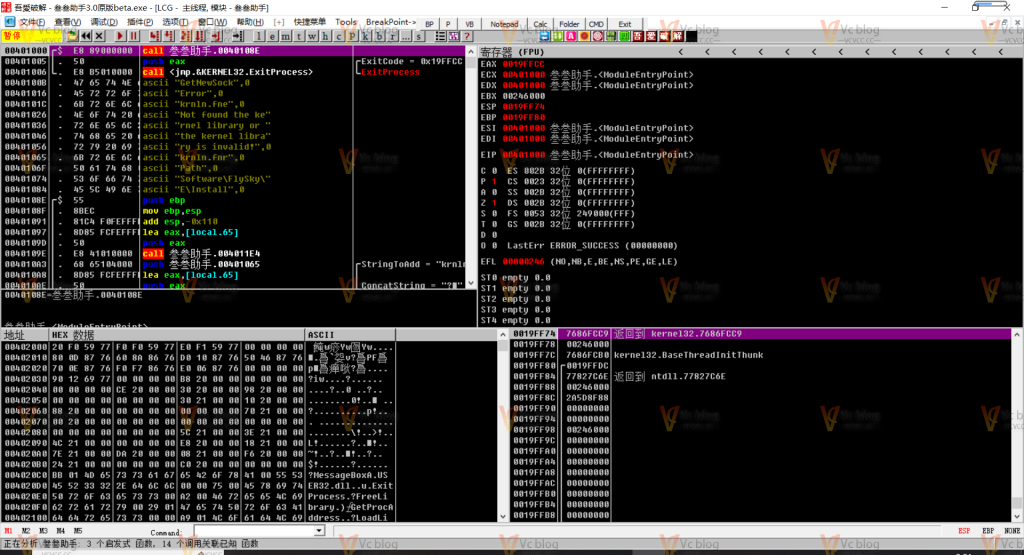Linux网络连接故障是运维工作中最棘手的问题之一,涉及DNS解析、端口连通性、防火墙配置、路由追踪等多个层面。本文通过真实生产环境案例,提供从基础检测到深度诊断的完整网络排查方案,帮助企业快速定位和解决网络连接问题。
![图片[1]-Linux网络连接故障排查:快速解决端口不通、DNS解析失败和路由问题](https://blogimg.vcvcc.cc/2025/11/20251107123309156.png?imageView2/0/format/webp/q/75)
一、网络基础连通性诊断
1. 基础网络状态检查
(1)全方位网络诊断脚本
<strong>#!/bin/bash</strong>
# network_basic_diagnosis.sh
echo "====== 网络基础连通性诊断 ======"
echo "诊断时间: $(date)"
echo ""
# 1. 网络接口状态检查
echo "1. 网络接口状态:"
ip addr show | grep -E "^( |[0-9])" | while read line; do
if echo "$line" | grep -q "^[0-9]"; then
interface=$(echo "$line" | awk -F: '{print $2}')
state=$(echo "$line" | grep -o "state [A-Z]*" | awk '{print $2}')
echo "接口: $interface, 状态: $state"
fi
done
# 2. 默认网关检查
echo -e "\n2. 路由表信息:"
ip route show | grep default || echo "警告: 未找到默认路由"
# 3. DNS解析测试
echo -e "\n3. DNS解析测试:"
test_domains=("google.com" "baidu.com" "github.com")
for domain in "${test_domains[@]}"; do
if nslookup "$domain" >/dev/null <strong>2</strong>><strong>&1</strong>; then
echo "✅ $domain 解析成功"
else
echo "❌ $domain 解析失败"
fi
done
# 4. 基础连通性测试
echo -e "\n4. 网络连通性测试:"
test_ips=("8.8.8.8" "114.114.114.114" "1.1.1.1")
for ip in "${test_ips[@]}"; do
if ping -c 2 -W 1 "$ip" >/dev/null <strong>2</strong>><strong>&1</strong>; then
echo "✅ $ip 可达"
else
echo "❌ $ip 不可达"
fi
done
# 5. 网络连接统计
echo -e "\n5. 网络连接统计:"
ss -s | head -3(2)网络接口深度分析
<strong>#!/bin/bash</strong>
# network_interface_analysis.sh
echo "====== 网络接口深度分析 ======"
echo ""
# 检查所有网络接口
analyze_interfaces() {
echo "1. 网络接口详细状态:"
for interface in $(ip link show | grep -E "^[0-9]+:" | awk -F: '{print $2}' | tr -d ' '); do
echo "接口: $interface"
# 接口状态
state=$(ip link show "$interface" | grep -o "state [A-Z]*" | awk '{print $2}')
echo " 状态: $state"
# IP地址信息
ip_addr=$(ip addr show "$interface" | grep "inet " | awk '{print $2}')
if [ -n "$ip_addr" ]; then
echo " IP地址: $ip_addr"
else
echo " IP地址: 未配置"
fi
# MAC地址
mac_addr=$(ip link show "$interface" | grep "link/ether" | awk '{print $2}')
if [ -n "$mac_addr" ]; then
echo " MAC地址: $mac_addr"
fi
# 接口统计信息
echo " 接口统计:"
ip -s link show "$interface" | grep -A 3 "RX:" | head -3 | while read stat; do
echo " $stat"
done
echo ""
done
}
# 检查网络配置文件
check_network_config() {
echo "2. 网络配置文件检查:"
config_files=(
"/etc/network/interfaces"
"/etc/sysconfig/network-scripts/ifcfg-*"
"/etc/netplan/*.yaml"
"/etc/systemd/network/*.network"
)
for pattern in "${config_files[@]}"; do
for file in $pattern; do
if [ -f "$file" ]; then
echo "配置文件: $file"
if [ "$(stat -c %a "$file")" != "600" ] && [ "$(stat -c %a "$file")" != "644" ]; then
echo " 警告: 文件权限异常 - $(stat -c %a "$file")"
fi
fi
done
done
}
# 检查网络服务状态
check_network_services() {
echo -e "\n3. 网络服务状态:"
services=("NetworkManager" "network" "systemd-networkd" "networking")
for service in "${services[@]}"; do
if systemctl is-active "$service" >/dev/null <strong>2</strong>><strong>&1</strong>; then
echo "✅ $service: 运行中"
elif systemctl is-enabled "$service" >/dev/null <strong>2</strong>><strong>&1</strong>; then
echo "⚠️ $service: 已启用但未运行"
else
echo "❌ $service: 未启用"
fi
done
}
analyze_interfaces
check_network_config
check_network_services二、端口连通性与服务诊断
1. 端口监听与连接检测
(1)全方位端口扫描诊断
<strong>#!/bin/bash</strong>
# port_connectivity_diagnosis.sh
echo "====== 端口连通性深度诊断 ======"
echo ""
# 检查本地端口监听
check_local_listening_ports() {
echo "1. 本地监听端口检查:"
echo "TCP监听端口:"
ss -tlnp | while read line; do
if echo "$line" | grep -q "LISTEN"; then
port=$(echo "$line" | awk '{print $4}' | awk -F: '{print $NF}')
process=$(echo "$line" | awk '{print $7}')
echo " 端口: $port, 进程: $process"
fi
done | sort -n | head -20
echo -e "\nUDP监听端口:"
ss -ulnp | while read line; do
if echo "$line" | grep -q "UNCONN"; then
port=$(echo "$line" | awk '{print $4}' | awk -F: '{print $NF}')
process=$(echo "$line" | awk '{print $7}')
echo " 端口: $port, 进程: $process"
fi
done | sort -n | head -20
}
# 检查端口连通性
check_port_connectivity() {
local target_host=$1
local ports=("22" "80" "443" "53" "3306" "5432" "6379")
echo -e "\n2. 远程端口连通性测试 ($target_host):"
for port in "${ports[@]}"; do
if command -v nc >/dev/null <strong>2</strong>><strong>&1</strong>; then
if nc -z -w 2 "$target_host" "$port" >/dev/null <strong>2</strong>><strong>&1</strong>; then
echo "✅ 端口 $port: 开放"
else
echo "❌ 端口 $port: 关闭"
fi
else
echo "⚠️ nc命令不可用,跳过端口测试"
break
fi
done
}
# 检查常见服务状态
check_service_status() {
echo -e "\n3. 常见网络服务状态:"
services=(
"sshd:22"
"nginx:80"
"apache2:80"
"httpd:80"
"mysql:3306"
"postgresql:5432"
"redis:6379"
)
for service_info in "${services[@]}"; do
service=$(echo "$service_info" | cut -d: -f1)
port=$(echo "$service_info" | cut -d: -f2)
if systemctl is-active "$service" >/dev/null <strong>2</strong>><strong>&1</strong>; then
echo "✅ $service: 运行中 (端口: $port)"
elif pgrep "$service" >/dev/null; then
echo "⚠️ $service: 进程存在但服务未管理 (端口: $port)"
else
echo "❌ $service: 未运行"
fi
done
}
# 检查端口冲突
check_port_conflicts() {
echo -e "\n4. 端口冲突检查:"
ss -tulnp | awk '{print $5}' | grep -E ":[0-9]+" | awk -F: '{print $NF}' | sort -n | uniq -d | while read port; do
echo "⚠️ 端口冲突: $port"
echo "占用进程:"
ss -tulnp | grep ":$port " | awk '{print " " $7}'
done
}
main() {
local target_host=${1:-"google.com"}
check_local_listening_ports
check_port_connectivity "$target_host"
check_service_status
check_port_conflicts
}
main "$@"2. 网络服务故障排查
(1)服务级网络诊断
<strong>#!/bin/bash</strong>
# service_level_network_diagnosis.sh
echo "====== 网络服务级深度诊断 ======"
echo ""
# Web服务诊断
diagnose_web_service() {
local url=${1:-"http://localhost"}
echo "1. Web服务诊断 ($url):"
if command -v curl >/dev/null <strong>2</strong>><strong>&1</strong>; then
# HTTP响应检查
echo "HTTP响应测试:"
http_code=$(curl -s -o /dev/null -w "%{http_code}" "$url")
echo " 状态码: $http_code"
# 响应时间
response_time=$(curl -s -o /dev/null -w "%{time_total}s" "$url")
echo " 响应时间: $response_time"
# SSL证书检查(如果是HTTPS)
if [[ "$url" == https* ]]; then
echo "SSL证书检查:"
curl -s -o /dev/null -w "SSL验证: %{ssl_verify_result}\n" "$url"
fi
else
echo "⚠️ curl不可用,跳过Web服务测试"
fi
}
# 数据库连接诊断
diagnose_database_connection() {
echo -e "\n2. 数据库连接诊断:"
# MySQL连接测试
if command -v mysql >/dev/null <strong>2</strong>><strong>&1</strong>; then
if mysql -h localhost -u root -e "SELECT 1;" >/dev/null <strong>2</strong>><strong>&1</strong>; then
echo "✅ MySQL: 连接正常"
else
echo "❌ MySQL: 连接失败"
fi
fi
# PostgreSQL连接测试
if command -v psql >/dev/null <strong>2</strong>><strong>&1</strong>; then
if psql -h localhost -U postgres -c "SELECT 1;" >/dev/null <strong>2</strong>><strong>&1</strong>; then
echo "✅ PostgreSQL: 连接正常"
else
echo "❌ PostgreSQL: 连接失败"
fi
fi
# Redis连接测试
if command -v redis-cli >/dev/null <strong>2</strong>><strong>&1</strong>; then
if redis-cli ping >/dev/null <strong>2</strong>><strong>&1</strong>; then
echo "✅ Redis: 连接正常"
else
echo "❌ Redis: 连接失败"
fi
fi
}
# DNS服务诊断
diagnose_dns_service() {
echo -e "\n3. DNS服务诊断:"
# 检查本地DNS解析
if systemctl is-active systemd-resolved >/dev/null <strong>2</strong>><strong>&1</strong>; then
echo "systemd-resolved: 运行中"
resolvectl status | grep -A 5 "DNS Servers"
fi
# 检查DNS配置
echo -e "\nDNS服务器配置:"
cat /etc/resolv.conf | grep nameserver
# DNS解析测试
echo -e "\nDNS解析测试:"
local test_domains=("localhost" "$(hostname)" "google.com")
for domain in "${test_domains[@]}"; do
if dig +short "$domain" >/dev/null <strong>2</strong>><strong>&1</strong>; then
echo "✅ $domain: 解析成功"
else
echo "❌ $domain: 解析失败"
fi
done
}
# 邮件服务诊断
diagnose_mail_service() {
echo -e "\n4. 邮件服务诊断:"
# SMTP服务检查
if nc -z localhost 25 >/dev/null <strong>2</strong>><strong>&1</strong>; then
echo "✅ SMTP (25): 服务运行中"
else
echo "❌ SMTP (25): 服务未运行"
fi
# 如果安装了postfix
if command -v postfix >/dev/null <strong>2</strong>><strong>&1</strong>; then
echo "Postfix状态:"
postfix status <strong>2</strong>>/dev/null || echo "Postfix未运行"
fi
}
main() {
local web_url=${1:-"http://localhost"}
diagnose_web_service "$web_url"
diagnose_database_connection
diagnose_dns_service
diagnose_mail_service
}
main "$@"三、防火墙与安全策略排查
1. 防火墙规则深度分析
(1)多防火墙系统检测
<strong>#!/bin/bash</strong>
# firewall_comprehensive_check.sh
echo "====== 防火墙全面检查 ======"
echo ""
# 检查iptables
check_iptables() {
echo "1. iptables规则检查:"
if command -v iptables >/dev/null <strong>2</strong>><strong>&1</strong>; then
echo "IPv4规则:"
iptables -L -n --line-numbers | head -20
if command -v ip6tables >/dev/null <strong>2</strong>><strong>&1</strong>; then
echo -e "\nIPv6规则:"
ip6tables -L -n --line-numbers | head -10
fi
else
echo "iptables不可用"
fi
}
# 检查firewalld
check_firewalld() {
echo -e "\n2. firewalld检查:"
if systemctl is-active firewalld >/dev/null <strong>2</strong>><strong>&1</strong>; then
echo "firewalld状态: 运行中"
echo "默认区域: $(firewall-cmd --get-default-zone)"
echo "活跃区域: $(firewall-cmd --get-active-zones | head -5)"
echo -e "\n开放服务:"
firewall-cmd --list-services
echo -e "\n开放端口:"
firewall-cmd --list-ports
else
echo "firewalld: 未运行"
fi
}
# 检查UFW
check_ufw() {
echo -e "\n3. UFW检查:"
if command -v ufw >/dev/null <strong>2</strong>><strong>&1</strong>; then
ufw status verbose
else
echo "UFW: 未安装"
fi
}
# 检查SELinux
check_selinux() {
echo -e "\n4. SELinux检查:"
if command -v sestatus >/dev/null <strong>2</strong>><strong>&1</strong>; then
sestatus | head -3
else
echo "SELinux: 未安装"
fi
if command -v getenforce >/dev/null <strong>2</strong>><strong>&1</strong>; then
echo "当前模式: $(getenforce)"
fi
}
# 检查网络连接阻止
check_network_blocks() {
echo -e "\n5. 网络连接阻止检查:"
# 检查被拒绝的连接
echo "最近被拒绝的连接:"
ss -tul4 | grep -E "(LISTEN|UNCONN)" | while read line; do
if echo "$line" | grep -q "0.0.0.0"; then
echo "监听: $line"
fi
done | head -10
}
check_iptables
check_firewalld
check_ufw
check_selinux
check_network_blocks四、网络性能与路由分析
1. 网络质量深度测试
(1)全方位网络性能诊断
<strong>#!/bin/bash</strong>
# network_performance_diagnosis.sh
echo "====== 网络性能深度诊断 ======"
echo ""
# 带宽和延迟测试
perform_bandwidth_test() {
echo "1. 网络带宽和延迟测试:"
local test_hosts=("8.8.8.8" "1.1.1.1" "114.114.114.114")
for host in "${test_hosts[@]}"; do
echo "测试目标: $host"
# 延迟测试
if ping -c 4 -W 1 "$host" >/dev/null <strong>2</strong>><strong>&1</strong>; then
avg_latency=$(ping -c 4 -W 1 "$host" | grep "avg" | awk -F'/' '{print $5}')
echo " 平均延迟: ${avg_latency}ms"
else
echo " 延迟: 不可达"
fi
# 带宽测试(简单版)
if command -v iperf3 >/dev/null <strong>2</strong>><strong>&1</strong>; then
echo " 运行iperf3测试..."
else
echo " 安装iperf3进行带宽测试: apt-get install iperf3"
fi
done
}
# 路由追踪分析
perform_traceroute_analysis() {
local target_host=${1:-"google.com"}
echo -e "\n2. 路由追踪分析 ($target_host):"
if command -v traceroute >/dev/null <strong>2</strong>><strong>&1</strong>; then
echo "路由路径:"
traceroute -m 15 -w 1 "$target_host" <strong>2</strong>>/dev/null | head -20
elif command -v tracepath >/dev/null <strong>2</strong>><strong>&1</strong>; then
echo "路由路径 (tracepath):"
tracepath "$target_host" | head -20
else
echo "安装traceroute或tracepath进行路由分析"
fi
}
# 网络连接质量监控
monitor_connection_quality() {
echo -e "\n3. 网络连接质量监控:"
# 检查TCP连接状态
echo "TCP连接状态统计:"
ss -t -o state established | wc -l
echo "个已建立连接"
# 检查重传和错误
echo -e "\n网络错误统计:"
netstat -s | grep -E "segments retransmitted|packet receive errors" | head -5
}
# DNS性能测试
test_dns_performance() {
echo -e "\n4. DNS性能测试:"
local test_domains=("google.com" "github.com" "baidu.com")
for domain in "${test_domains[@]}"; do
echo "测试域名: $domain"
# 查询时间测试
if command -v dig >/dev/null <strong>2</strong>><strong>&1</strong>; then
query_time=$(dig "$domain" | grep "Query time:" | awk '{print $4}')
echo " 查询时间: ${query_time}ms"
fi
done
}
main() {
local target_host=${1:-"google.com"}
perform_bandwidth_test
perform_traceroute_analysis "$target_host"
monitor_connection_quality
test_dns_performance
}
main "$@"五、网络故障应急处理
1. 网络服务快速恢复
(1)网络故障应急脚本
<strong>#!/bin/bash</strong>
# network_emergency_recovery.sh
echo "====== 网络故障应急处理 ======"
echo ""
# 重启网络服务
restart_network_services() {
echo "1. 重启网络服务..."
# 根据系统类型选择服务
if systemctl is-active NetworkManager >/dev/null <strong>2</strong>><strong>&1</strong>; then
echo "重启NetworkManager..."
systemctl restart NetworkManager
fi
if systemctl is-active network >/dev/null <strong>2</strong>><strong>&1</strong>; then
echo "重启network服务..."
systemctl restart network
fi
if systemctl is-active systemd-networkd >/dev/null <strong>2</strong>><strong>&1</strong>; then
echo "重启systemd-networkd..."
systemctl restart systemd-networkd
fi
# 重启网络接口
echo "重启网络接口..."
for interface in $(ip link show | grep "state UP" | awk -F: '{print $2}' | tr -d ' '); do
echo "重启接口: $interface"
ip link set "$interface" down
sleep 2
ip link set "$interface" up
done
}
# 清除网络缓存
clear_network_cache() {
echo -e "\n2. 清除网络缓存..."
# 清除ARP缓存
echo "清除ARP缓存..."
ip neigh flush all
# 清除路由缓存
echo "清除路由缓存..."
ip route flush cache
# 重启DNS解析服务
if systemctl is-active systemd-resolved >/dev/null <strong>2</strong>><strong>&1</strong>; then
echo "重启systemd-resolved..."
systemctl restart systemd-resolved
fi
# 清除DNS缓存
echo "清除DNS缓存..."
if command -v nscd >/dev/null <strong>2</strong>><strong>&1</strong>; then
nscd -i hosts
fi
}
# 临时防火墙规则调整
adjust_firewall_temporary() {
echo -e "\n3. 临时防火墙调整..."
read -p "是否临时禁用防火墙进行测试? (y/N): " -n 1 -r
echo
if [[ $REPLY =~ ^[Yy]$ ]]; then
if systemctl is-active firewalld >/dev/null <strong>2</strong>><strong>&1</strong>; then
echo "临时停止firewalld..."
systemctl stop firewalld
fi
if command -v iptables >/dev/null <strong>2</strong>><strong>&1</strong>; then
echo "设置临时iptables策略(允许所有)..."
iptables -P INPUT ACCEPT
iptables -P FORWARD ACCEPT
iptables -P OUTPUT ACCEPT
iptables -F
fi
echo "防火墙已临时禁用,记得重新启用!"
fi
}
# 网络配置检查
check_network_configuration() {
echo -e "\n4. 网络配置检查..."
echo "当前IP配置:"
ip addr show
echo -e "\n路由表:"
ip route show
echo -e "\nDNS配置:"
cat /etc/resolv.conf
}
# 执行应急处理
main() {
echo "开始网络故障应急处理..."
echo "警告: 这将重启网络服务和调整防火墙"
read -p "确认继续? (y/N): " -n 1 -r
echo
if [[ ! $REPLY =~ ^[Yy]$ ]]; then
echo "操作已取消"
exit 1
fi
restart_network_services
clear_network_cache
adjust_firewall_temporary
check_network_configuration
echo -e "\n应急处理完成,请测试网络连接"
echo "如果问题仍然存在,请检查物理连接和ISP状态"
}
main总结
Linux网络连接故障排查需要系统化的方法和专业的工具链。通过本文提供的诊断脚本和排查方案,可以从基础连通性测试到深度性能分析,快速定位DNS解析、端口连通、防火墙策略、路由问题等网络故障。建议建立完善的网络监控体系,定期进行网络健康检查,并制定详细的应急处理流程。
© 版权声明
THE END

















暂无评论内容